The Top 25 RPGs of All Time #21: World of Warcraft
Fourteen years later, Blizzard Entertainment's adventure in Azeroth is still putting up a good fight.
This article first appeared on USgamer, a partner publication of VG247. Some content, such as this article, has been migrated to VG247 for posterity after USgamer's closure - but it has not been edited or further vetted by the VG247 team.
This is the latest entry in our ongoing countdown of the Top 25 RPGs of all time. This week: Blizzard Entertainment's MMO continues to lead the genre despite its age.
World of Warcraft is the most influential massively-multiplayer role-playing game (MMORPG) ever.
It wasn't the first, obviously. Ultima Online largely established the MMO model seven years earlier, but that was a pretty hardcore experience, throwing players into a hostile and unforgiving world. Sony Online Entertainment's Everquest followed in 1999, creating the rough template that Blizzard Entertainment would look at and go, "Can we do this, but with Warcraft?"
Nor has it been the last. There have been numerous contenders for the throne over the years: Lord of the Rings Online, Guild Wars, Star Wars: The Old Republic, Neverwinter, TERA, Rift, and Elder Scrolls Online. Some have tried to compete on the same level, while others have shuttered trying. Square Enix' Final Fantasy XIV even rebooted itself into something more in the style of WoW to great success.
Despite all this, World of Warcraft remains alive and relevant 14 years after its original launch. That's a testament to the game's original core and the efforts of Blizzard Entertainment to continue evolving the world of Azeroth.
World of Warcraft has always been the recipient of Blizzard Entertainment's best strength: the ability to recognize good ideas and concepts in other games and improve upon them. Everquest was an excellent MMO for its time, introducing players to a massive 3D world where they could team up with other players to explore and fight mythical creatures. World of Warcraft took that foundation, while streamlining and improving the house built upon it.
In Everquest, quest givers were unmarked and players had to either talk to everyone, or know exactly who to talk to. (The ZAM Network began as Allakhazam, a site offering quest descriptions and guides for Everquest players.) World of Warcraft replaced that with the iconic golden exclamation point icon, so players would know exactly which characters offered quests. When you died in Everquest, you would spawn back at a city and had to make a run back to your corpse to retrieve any gear and loot. WoW replaced that with a system that turned you into a ghost that could walk back to your corpse unmolested and your gear stayed with you. Everquest's aggressive enemies would chase a player until they reached the loading barrier of the current region; World of Warcraft offered a more seamless world map and enemies were roughly tethered to their starting locations. These are small changes, but for new players they provide major benefits.

World of Warcraft also added a new system rooted in Warcraft lore. The game was split between two factions: the Alliance and the Horde. At launch, the Alliance was comprised of races that leaned towards normal fantasy tropes: Human, Dwarf, Gnome, and Night Elf. The Horde offered characters a bit more off the beaten path: Orc, Tauren, Troll, and Undead. Even spread across various servers, players in World of Warcraft felt bound together by the faction they chose to become a part of. Long-time players know rallying cries like "For the Horde!" because they're a strong part of the emotional fabric of WoW.
A few changes and improvements from the Everquest formula was all World of Warcraft needed to establish a solid base of players, especially coming off the release of Warcraft III: Reign of Chaos. Though Warcraft III was a strategy title, it leaned hard on the role-playing side, establishing characters and lore that would take center stage in World of Warcraft: the orc Thrall, eventual Lich King Arthas Menethil, Night Elf Tyrande Whisperwind, mage Jaina Proudmoore, and more. While some of these characters have since been killed or transitioned into the background, many remain key figures in World of Warcraft's storytelling.
Warcraft III was just the taste. World of Warcraft built upon that game's art style with its fully-realized continents, Kalimdor and the Eastern Kingdoms. Each continent was full of amazing cities like Stormwind and Orgrimmar, with environments stretching from golden plains, to haunting deserts and wintry hellscapes. Each area was full of quests to undertake, so players didn't have to worry about the repetitive grind that categorized other MMOs at the time. Characters healed outside of combat, so downtime was kept to a minimum. Players could play alone, band together for five-man dungeons, or bring a 40 players together to take on Onyxia's Lair and Molten Core together. And if you wanted to fight other players, the player-vs-player (PVP) honor system and Battlegrounds came early in 2005.
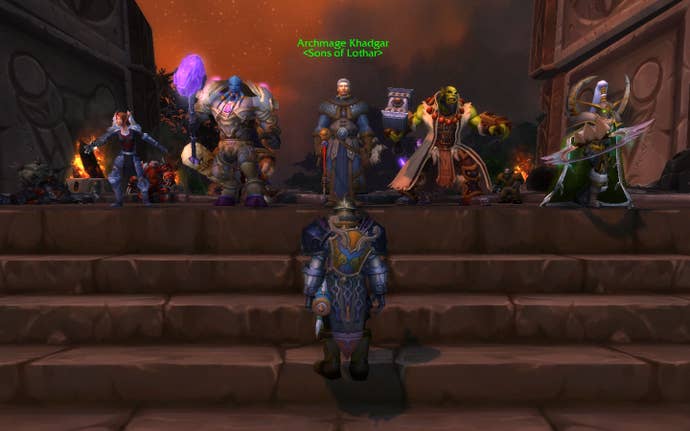
Everquest was eight expansions deep by time World of Warcraft launched, and the latter game was not only easier to get into, it offered a semi-seamless world, a unique art style, and a story expansion for a fan-favorite PC game. It was a hit from the beginning.
Blizzard Entertainment didn't stop though, and that's why World of Warcraft has staying power more than a decade later. The game shifts with the times: World of Warcraft at launch is different from World of Warcraft: Legion. That's why Blizzard is working to offer the game's launch state with World of Warcraft Classic; some miss the way the game was.
World of Warcraft's first expansion, The Burning Crusade, took players to the destroyed world of Outland and added Blood Elf and Draenei to the roster of races. Outland was a floating ethereal husk of a world, allowing Blizzard's artists to depart from the more grounded locations of Vanilla WoW. Flying mounts joined the floating regions, letting players soar above the battlefield.
The next expansion was Wrath of the Lich King, moving the story to the frozen wilds of Northrend. The Death Knight class came with the Lich King himself, and Blizzard's storytelling became better with the addition of new in-engine-style cutscenes and phasing. The latter technology allowed Blizzard to make the world reflect your place in the overall story, changing regions from wartime fortifications to graveyards with a single quest. A later patch in Wrath would add the Dungeon Finder, making it much easier for players to create groups for five-man dungeons.
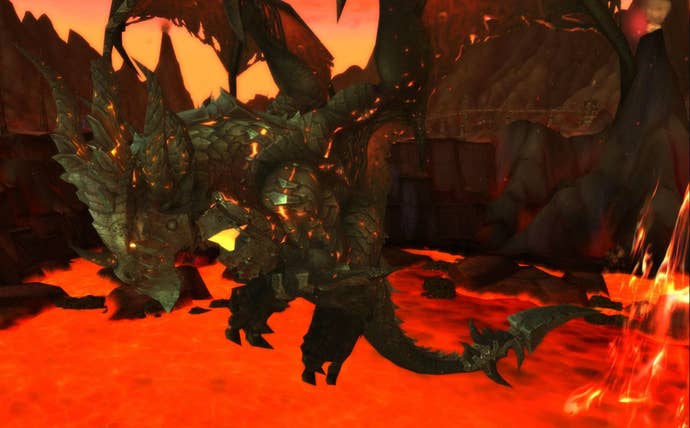
The Cataclysm tore Azeroth asunder and used the attack of the dragon Deathwing to remix the continents of Vanilla WoW. New features like the Raid Finder and Transmogrification, which allowed players to change their displayed gear to a look of their own choosing, found themselves introduced in Cataclysm. With the addition of Goblin and Worgen races, World of Warcraft hit its all-time high of 12 million subscribers. Mists of Pandaria brought the Pandaren and their fabled continent into the fold. It also added cross-realm zones and the new Scenarios, letting solo players enjoy some story-heavy adventures.
Warlords of Draenor followed Mists of Pandaria, which saw WoW's first real drop in total subscribers. Warlords was an alternate reality adventure, showing players Outland in its original form, Draenor. It shifted the storytelling again, with the player character becoming the solo hero that the supporting cast of World of Warcraft looked up to. You were the Commander of your own Garrison, a tiny, malleable town on Draenor itself. The latest expansion, Legion, returned your hero back to Azeroth, becoming the head of their Class Order and fighting the burning Legion on the Broken Isles.
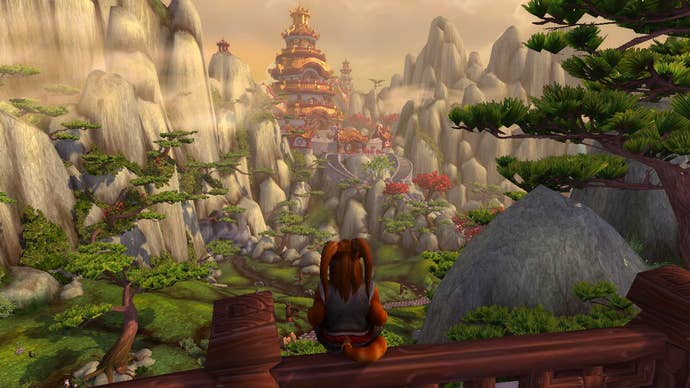
World of Warcraft just keeps expanding, providing something for everyone. If you're a solo player who prefers to fight in player-vs-environment (PVE) situations, there's new zones, daily quests, and Scenarios to undertake. If you have a small group of friends, you can run dungeons. Raids dropped from their 40-man requirement, to 25 and 10-man, before finally settling on the scaling Flexible Raid system. Love to make your character look cool, goofy, or anything in-between? Run old content for Transmog appearances or mounts. If you're economically minded, you can stick with crafting and gathering Professions, playing the Auction House like a boss. If you like PVP, Battlegrounds are still there and Arena offers competitive play each season. Hell, there's even a Pokemon-style Pet capture and battle system that keeps getting updated. There's always something to do.
And in the middle of these new mechanical additions, World of Warcraft has continued to push forward the lore of Warcraft. Players banded together to take down major menaces like Arthas Menethil, Gul'dan, and Kil'jeaden. We've seen the sacrifice of Bolvar Fordragon, watched Illidan go from Outland's biggest threat to the warden of the Titan Sargeras, smiled as Thrall found his peace, and grimaced at the Undead betrayal at the Wrath Gate. Not every character or storyline has been a winner—poor Vol'jin didn't get much to do before he died—but Blizzard has kept things moving forward at a brisk and consistent pace.
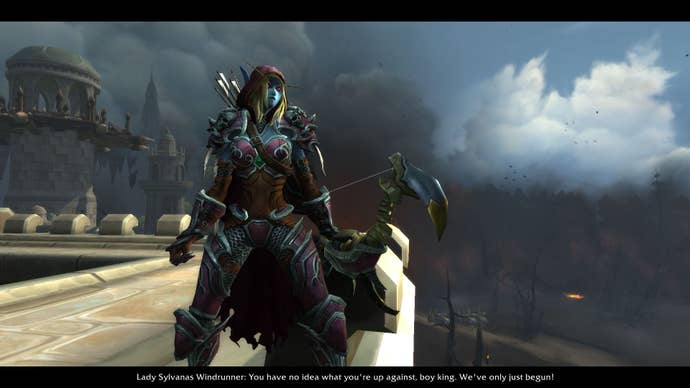
World of Warcraft is one of the best RPGs of all time because it has remained relevant for so long. It evolves and changes along with its players, adding new facets and features year after year. Not every change is a winner, but the game continues to stride forward confidently. No other MMO can say the same, and certainly for not as long as World of Warcraft has. It's had many competitors and imitators, but at the end of the day, WoW is still standing.


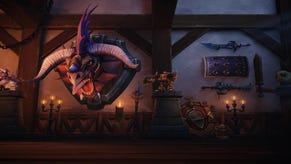
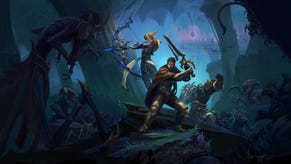
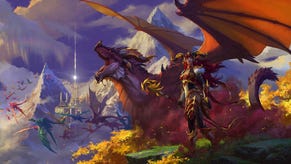

_ddwYK80.png?width=291&height=164&fit=crop&quality=80&format=jpg&auto=webp)


.jpg?width=291&height=164&fit=crop&quality=80&format=jpg&auto=webp)